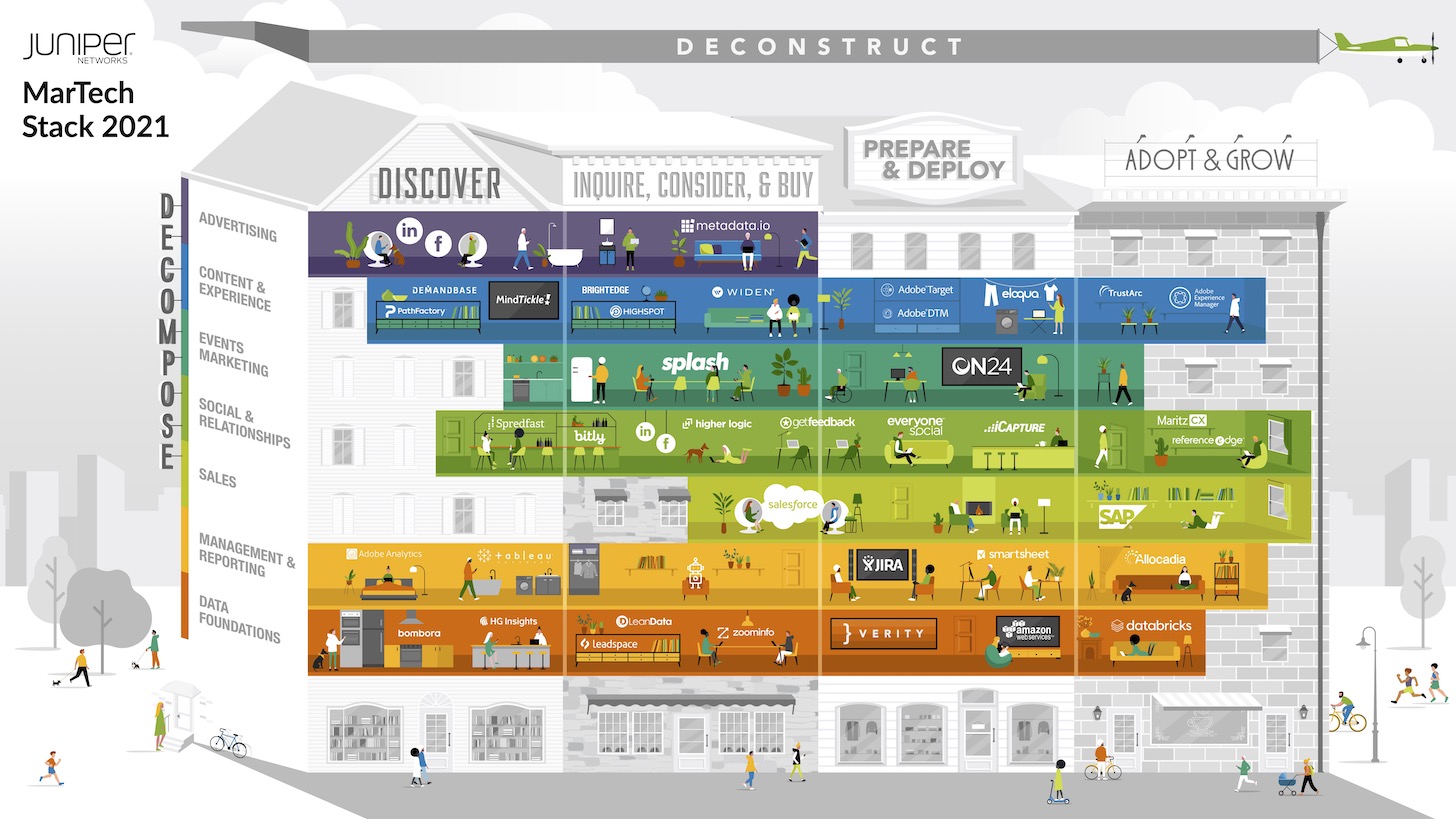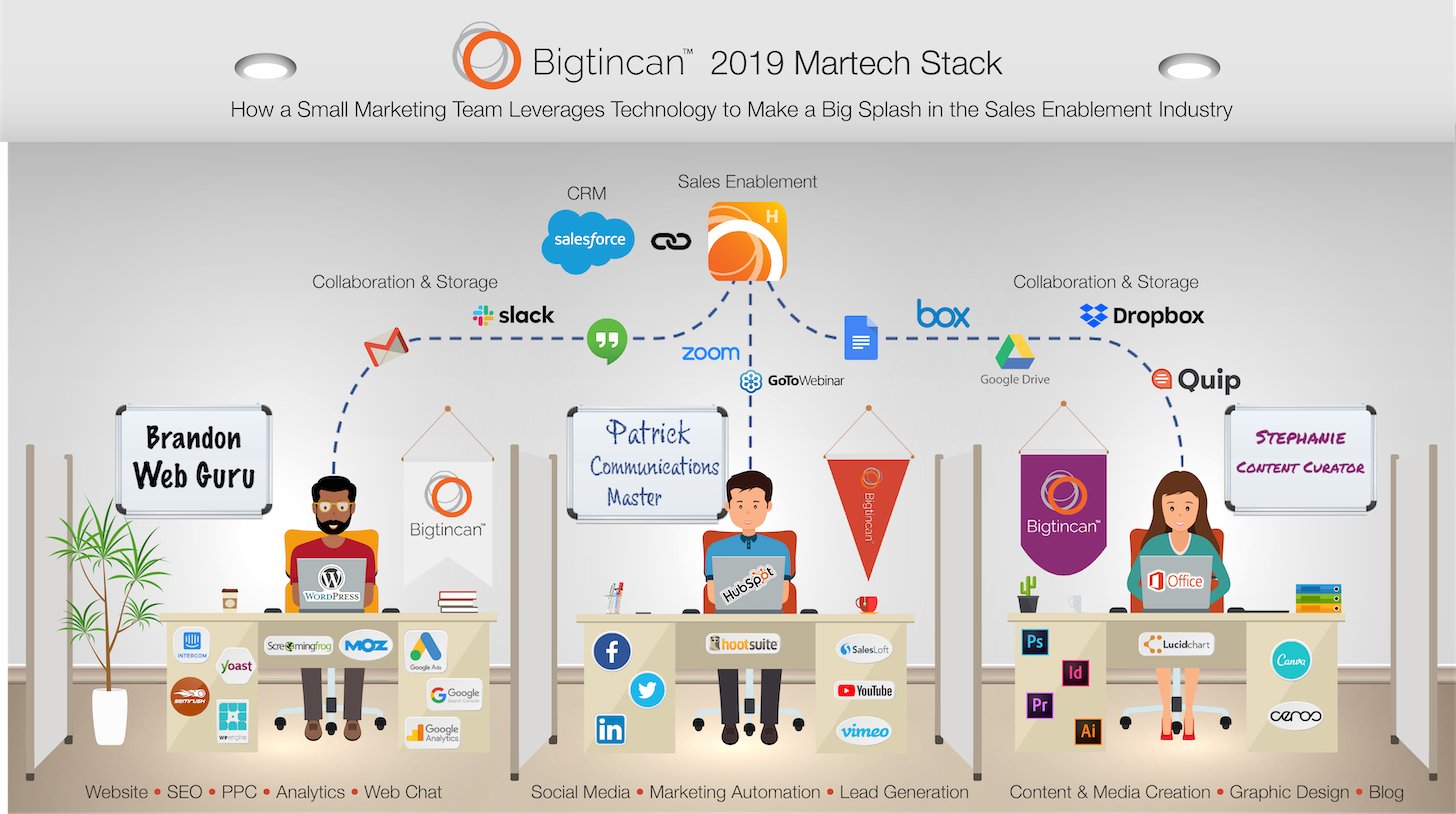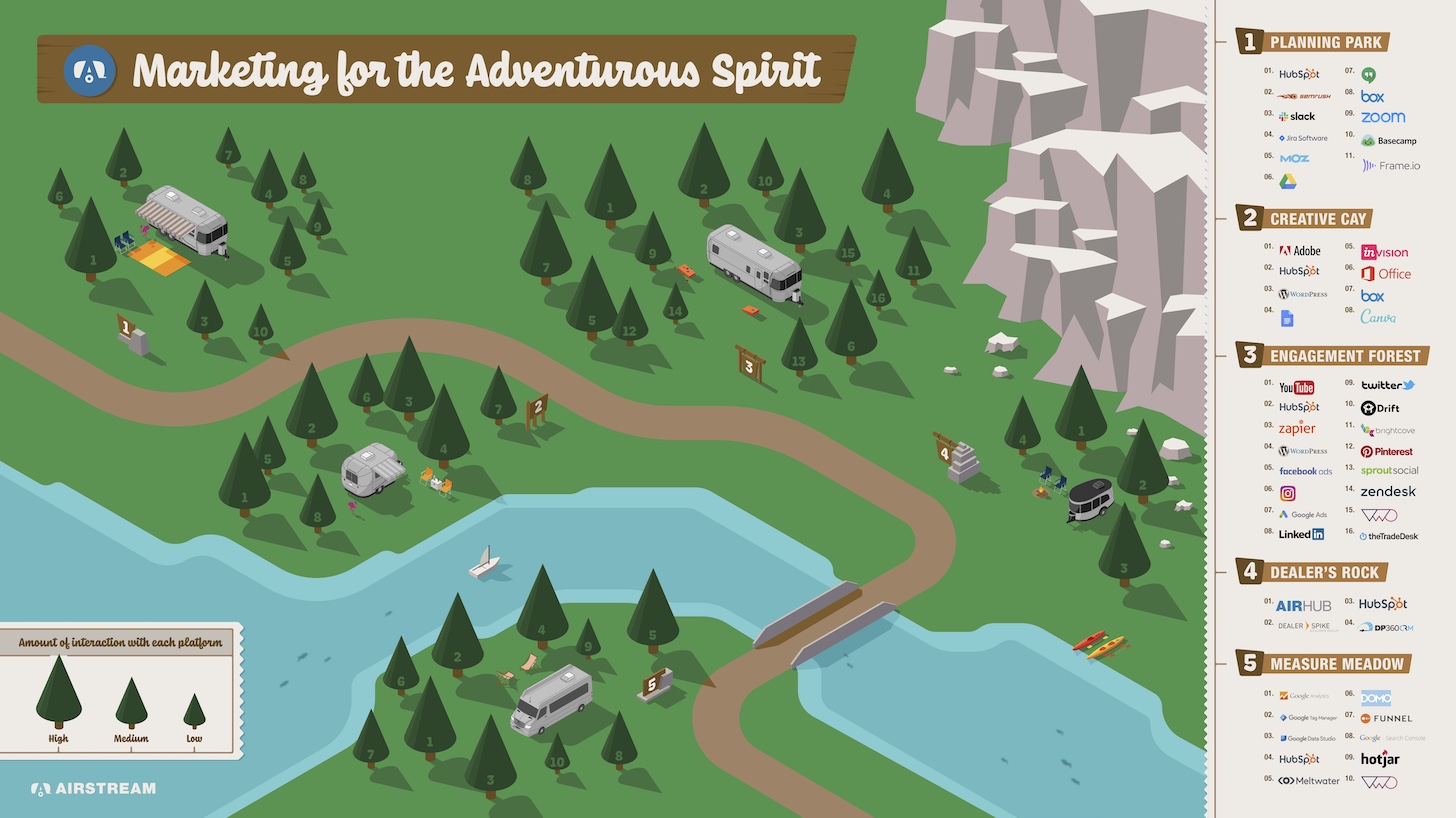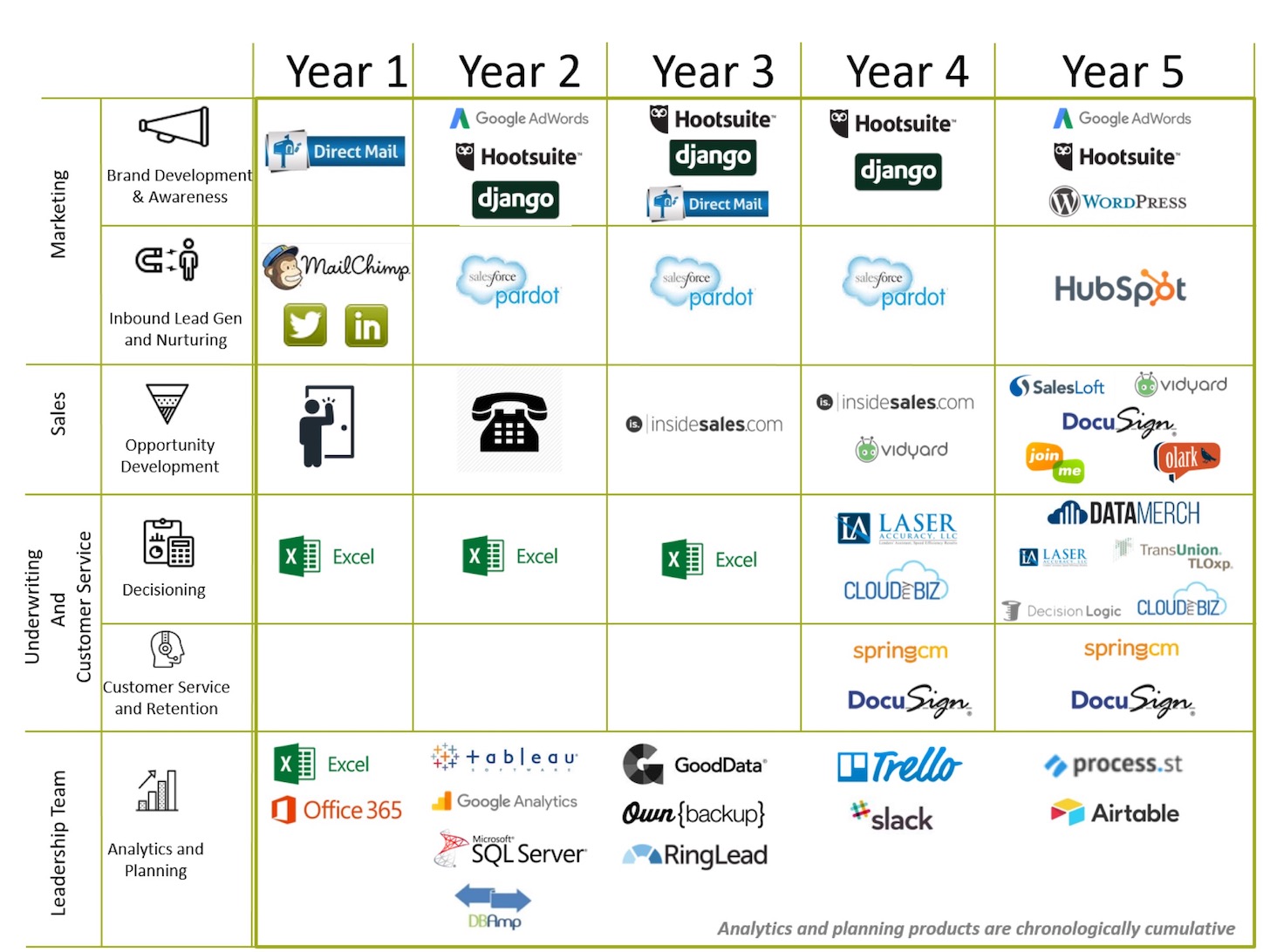
This is the 8th year we’re running The Stackies. It’s an awards program that invites marketers to share a single slide illustrating their martech stack — the different apps and platforms they use and how they conceptualize them working together.
I’d encourage you to participate (deadline for entries April 29). It’s a fantastic way to contribute to our community’s understanding of how martech fits into the function and flow of modern marketing.
However, even if you never share your stack outside the walls of your company, illustrating it can be an incredibly helpful exercise to better understand it — and be able to explain it to other stakeholders.
So what’s the best way to illustrate your stack?
Turns out there are many ways, each bringing a different lens. Having reviewed hundreds of entries to The Stackies over the years — here are all of them from 2015, 2016, 2017, 2018, 2019, 2020, and 2021 — I’ve distilled 10 patterns that I’ve seen on their own and in combination together.
1. Vendor Category Map
Often using the taxonomy from our marketing technology landscape, martech apps are organized into their product categories and subcategories. It shows your stack through the lens of a vendor market map and identifies the products you’ve selected. This is a great way to examine your overall stack inventory and show the span of martech solutions.
Here’s an example from SAS and their 2021 Stackie entry:

2. Customer Journey Map
Another common model is to align your martech stack against different stage of the customer’s journey. Generally for entries to The Stackies, the journey is simplified into 4-5 stages, such as Discover, Consider, Buy, Onboard, and Grow.
This terrific example from Juniper Networks and their 2021 Stackie entry illustrates two dimensions: the customer journey horizontally and the vendor categories used vertically:

3. Back-Stage vs. Front-Stage
Another way of looking at your stack is through a theater metaphor: back-stage and front-stage apps and platforms. Front-stage apps directly touch the customer — e.g., web experiences, email campaigns, social media engagement tools, advertising, etc. Back-stage apps are used to serve internal stakeholders, such as analytics, planning, asset management, productivity, etc.
This is an elegant example from Red Wing Shoes and their 2017 Stackie entry, with back-stage to front-stage categorization along the vertical access and customer journey stage along the horizontal axis:

4. Function or Role-Based Map
While martech stacks can be quite large, any one person in the marketing department is unlikely to have to learn all of the apps within it. Different roles within marketing will use different tools. So another useful way of mapping your martech stack is to group apps by the roles or functions that use them. This is reveals the “who” dimension of your stack, which is helpful to see the interrelation between apps, skills, and outcomes.
This example from Bigtincan’s 2019 Stackie entry illustrates three main roles: web management, marketing automation, and content marketing:

5. Point Solution/Platform Ecosystem Map
Integration is crucial to an effective martech stack. Another great way to visually analyze your stack is to show the platform(s) that are the gravitational center(s) of your martech stack and which specialist apps integrate to each of them. It’s an ecosystem view of your stack.
This example from Poly’s 2020 Stackie entry actually captures five different dimensions, including relative investment, paid/earned/owned solutions, vendor category — and identifies platforms, integrated specialist apps, and stand-alone point solutions:

6. Usage Map (Relative Time in Tools)
Some martech apps are used constantly, as an integral part of marketing’s day-to-day operations. Other apps, however, are more specialized and used less frequently. This doesn’t mean they’re not valuable. They just have a time and place for their purpose. Identifying heavily-used primary tools vs. lightly-used tools specialists can be another insightful way to understand the composition of your stack.
This example from Airstream’s 2019 Stackie entry cluster apps primarily by their use case — planning, creative, engagement, dealer channel, and measurement — but the height of the pine tree icons represents the relative time marketers spend interacting with each tool:

7. Relative Degree of Automation
While considering the amount of time that users spend engaged with different tools in your stack, it’s an interesting lens to examine how automated those tools are. Which tools are used mostly manually? Which ones have significant automations? This view can be helpful both to understand the relationship between tools and marketing process and operations. It can also help identify opportunities to automate.
Automation is the biggest frontier in Big Ops in my opinion.
This example from Paychex’s 2019 Stackie entry maps out their martech apps on two dimensions: different marketing capabilities and the degree to which they are automated:

8. Pace Layering of Platforms and Apps
Over a decade ago, as tech stacks in general — not just martech — were expanding rapidly, Gartner proposed a way to organize them by “pace layer.” They suggested three layers: systems of record, systems of differentiation, and systems of innovation.
Systems of record should be very stable and have a slow pace of change. They’re the platforms upon which other software and services rely. Systems of differentiation embody the processes and experiences that make your business unique. They change more frequently, but are still relatively stable. Systems of innovation are more experimental, the place where new capabilities can be developed and piloted quickly.
One of the best Stackie entries was this one from Microsoft in 2017, which mapped tools along the infinite loop of customer journeys, but then also separated them into Gartner’s three pace layers:

9. Evolution of Martech Tools Over Time
Martech stacks don’t stand still. New tools are added. Old tools are replaced. This is part of the natural evolution of a business as it grows — and as the broader marketing and martech environment continues to change around it. It can be useful to examine your martech stack through the lens of its changing app inventory over time.
This example, sent in by reader John Schott in 2017, shows a five-year journey of a small financial services business:

10. Related Capabilities Map
At the intersection of teams and tools, capabilities are developed. Rather than looking at your stack through the lens of vendor categories, you can arrange a view around different capabilities, such as marketplaces, user-generated content, content syndication, qualitative and quantitative research, etc. Mapping these capabilities in clusters, to show their adjacencies and relationships with each other gives you a picture of the ecosystem around your stack.
This 2021 Stackie entry from Philips is a terrific example:

Other Ways to Map Your Stack
Of course, there are many other ways to visualize other dimensions of your stack.
For instance, you might organize it around aggregation technologies within your martech stack. How are you horizontally aggregating data, workflow, experience, and governance across many different apps, data sources, and customer touchpoints? Which tools are you using to vertically integrate those layers within specific domains, such as CRM?
Alternatively, you might illustrate your stack to emphasize the degree of customization within different apps and platforms. They might range of purely out-of-the-box commercial apps, to packaged products that have been customized or extended with your own code, to completely custom apps that are unique to your business.
Each of these different approaches can give you different insights into the nature of your stack — and help you communicate them to stakeholders across your organization.
What does your martech stack look like?
Reminder: Even if you don’t enter The Stackies yourself — although we certainly hope you do — don’t forget to sign up for the free webinar on #MartechDay, May 3. We’ll be unveiling the new 2022 martech landscape, releasing a State of Martech report, and celebrating the entrants and winners of this year’s Stackie Awards.


